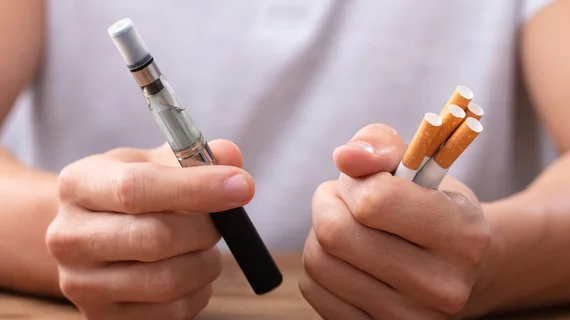CVS adds $2M to campaign to end youth vaping
CVS Health announced a $2 million contribution to an existing $50 million campaign to end e-cigarette use, known as vaping, among teenagers. The announcement comes at a time when hundreds of lung disease injuries linked to vaping have appeared in dozens of states.
The CDC has launched an investigation into the illnesses, which do not appear to be linked to a specific product or type of e-cigarette but are associated with e-cigarette use. One death in Illinois has also been linked to the outbreak of lung disease, and at least 200 cases of severe lung disease have been reported as of the end of August.
CVS Health is making a move to end youth vaping, which has taken off over the last several years. Five years ago, the company decided to pull tobacco off its shelves in an effort to align with its health and wellness brand, and its focus on vaping expands on that initiative. CVS previously announced a $50 million initiative called “Be The First” to help create the first tobacco-free generation.
CVS’ decision to stop selling tobacco led to a direct decline in cigarette purchases in states where CVS Pharmacy had a significant market share. According to CVS Health Chief Medical Officer Troyen Brenna, MD, MPH, those that purchased cigarettes exclusively at CVS Pharmacy where 38% more likely to stop buying cigarettes after the company stopped selling them.
“Five years ago, we knew exiting tobacco was the right thing to do for our company and for the health of our customers and the communities we serve," Larry J. Merlo, president and CEO of CVS Health, said in a statement. "But our decision to eliminate tobacco was just the start. As a health care company now combined with Aetna, we continue to take bold steps to develop and deliver innovative solutions for the communities we serve, one individual and one community at a time."
On Sept. 3, the company announced an additional $2 million pledged from the Aetna Foundation to provide educational materials and tools to prevent smoking and vaping to “thousands of clinicians” linked to organizations such as the American Academy of Pediatrics, the National Medical Association, the National Hispanic Medical Association and the National Association of School Nurses.
CVS’ campaign already pledged $10 million earlier this year to combat youth vaping. The company is also looking to step up tobacco-cessation efforts in Medicaid, where 25.3% of enrollees smoke––compared to 11.8% of people enrolled in private insurance.
"Through our efforts to increase access to tobacco cessation and many of our other initiatives, we are developing innovative approaches to deliver community-based health care," Merlo said.

